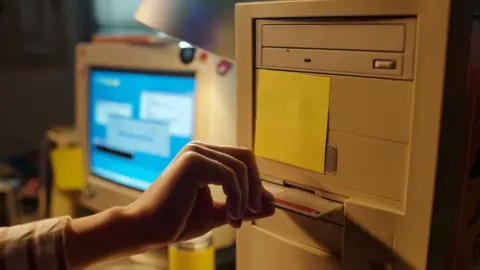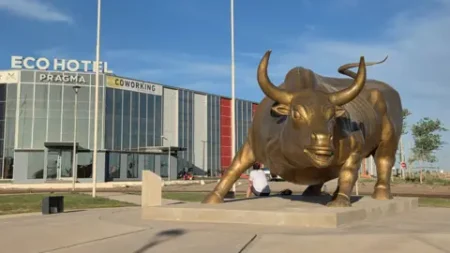**AOL Announces the Closure of Dial-Up Service After Over Three Decades**
In a significant move marking the end of an era, AOL has officially announced the discontinuation of its dial-up internet service, a connection method that introduced countless households across the United States to the internet over 30 years ago. The service, characterized by its unique whirring start-up sound, gained pop culture prominence with the 1998 film “You’ve Got Mail.” However, as technology rapidly evolved, dial-up became largely obsolete, overshadowed by faster broadband alternatives.
With government statistics from 2023 revealing that fewer than 300,000 people in the U.S. solely relied on dial-up connections, this decision reflects not only a shift in consumer behavior but also the broader advancements in internet connectivity. Comparatively, more than 300 million Americans now utilize broadband services, demonstrating the overwhelming preference for speed and reliability that dial-up simply cannot offer.
On September 30, 2025, AOL will officially end its dial-up services across the United States and Canada. In a recent communication to subscribers, the company conveyed its decision, stating, “AOL routinely evaluates its products and services and has decided to discontinue Dial-up Internet.” This marks a significant chapter in AOL’s history, as the company has largely been synonymous with early internet access and usage.
AOL not only pioneered the dial-up mechanism but was also known for its innovative marketing strategies, such as sending out free trial discs to entice potential customers. At its peak, AOL boasted a staggering 40% of Americans’ time spent online and over 30 million subscribers by the end of 2001. However, as the broadband revolution began to take root, the dial-up service suffered a decline, and discussions regarding its obsolescence began as early as 2003. An article in the Wall Street Journal even declared “It’s official. Dial-up is dying,” signalling the end of an era.
The company’s history is dotted with notable milestones. AOL’s UK division was sold off in 2006, and its disastrous merger with Time Warner in 2000 is frequently cited as a pivotal moment that demonstrated how quickly the tech landscape could shift. In subsequent years, Attention shifted again, as Time Warner spun off AOL in 2009. The latter was then acquired by Verizon in 2015, which recognized potential in AOL’s mobile technology, later merging it with Yahoo. Presently, both AOL and Yahoo fall under the ownership of Apollo Global Management.
Reflecting on the legacy of dial-up, AOL co-founder Steve Case expressed sentiment regarding the service’s closure, stating, “Thanks for the memories. RIP.” His comments underline the emotional weight that the announcement carries for those who experienced the early days of internet connectivity. For many users, the dial-up service was a gateway to the expansive world of online communication and resources.
As the digital landscape continues to evolve, the farewell to dial-up service encapsulates broader trends in technology, connectivity, and consumer preferences. The end of dial-up not only represents a technological obsolescence but also serves as a reminder of the rapid pace at which digital innovations can shape our lives. As we bid adieu to this once-revolutionary service, we also embrace the continual evolution of how we connect with the world around us.
In conclusion, AOL’s decision to terminate its dial-up service marks a bittersweet farewell to a pivotal element of early internet history. It highlights society’s swift technological advancements while serving as a nostalgic reminder of the past. As broadband technology continues to dominate the landscape, tech enthusiasts and laypeople alike will remember the chirps and whirs of dial-up as a cultural artifact, symbolizing an innovative era that laid the groundwork for the robust online experiences we enjoy today.











